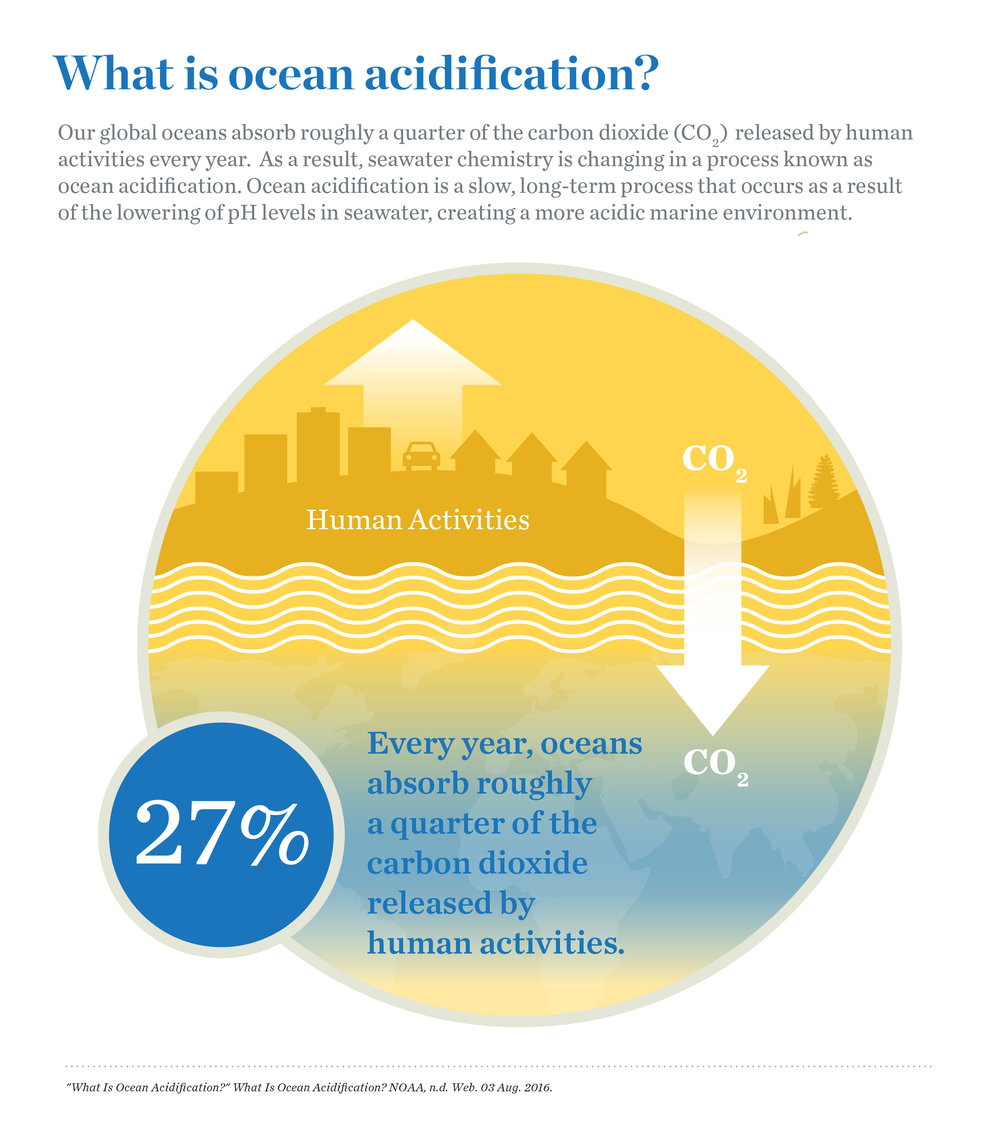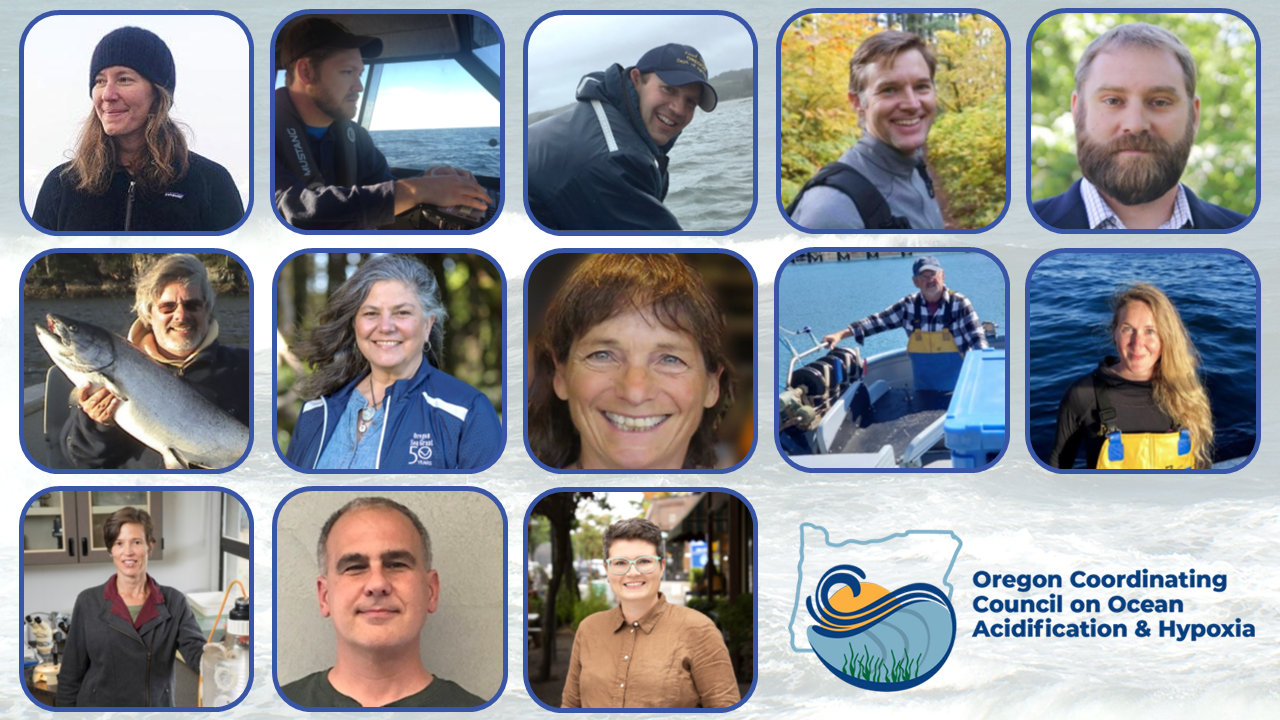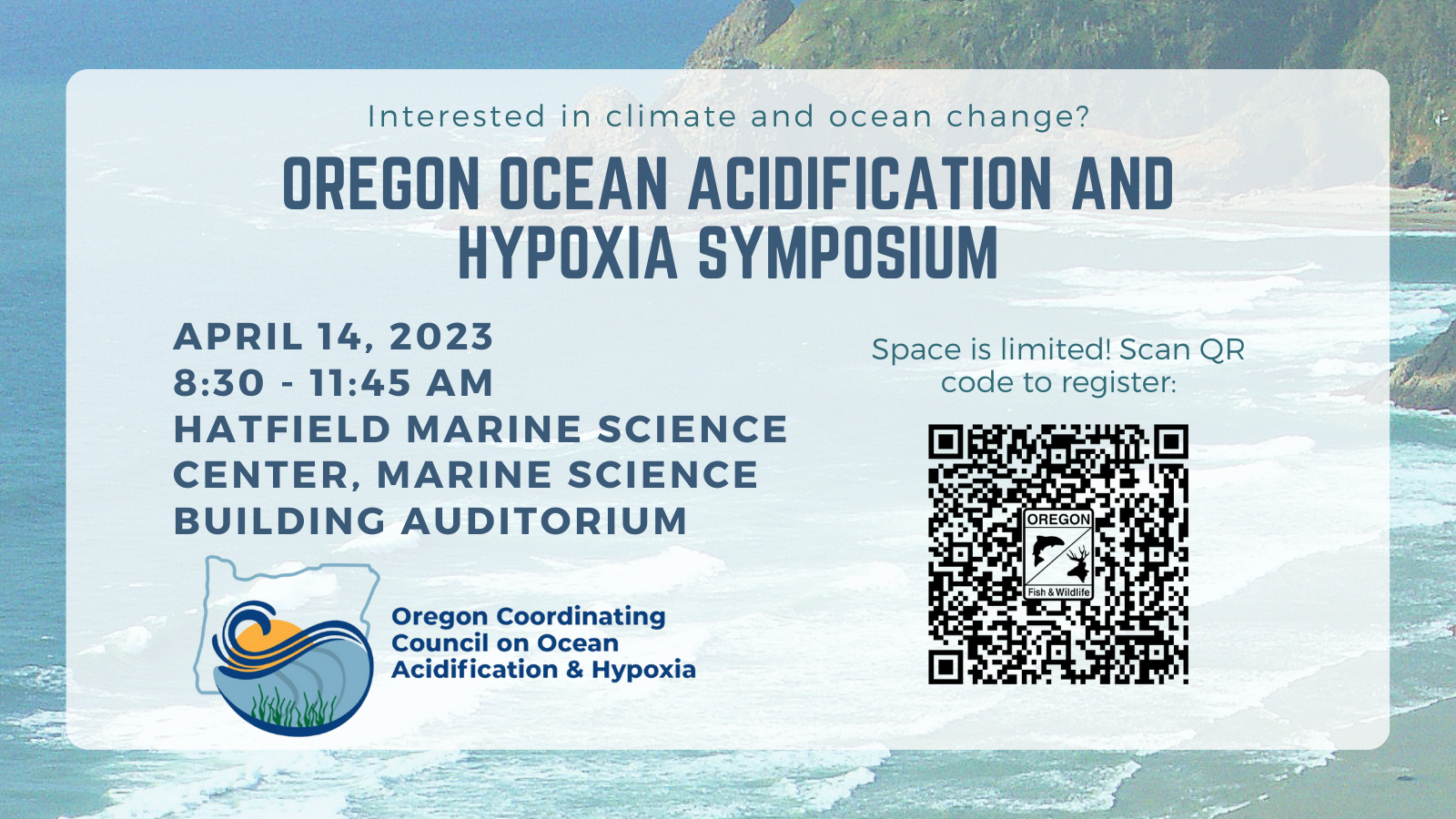Oregon Coordinating Council on Ocean Acidification and Hypoxia
 |
Oregon was one of the first places in the world to experience the direct impacts of ocean acidification and hypoxia (OAH) with the collapse of the Whiskey Creek Shellfish Hatchery in 2007. These changes in ocean acidity and oxygen are approaching or meeting levels that are problematic for oysters, crab, mussels, urchins, salmon, rockfish, and other species that Oregonians care deeply about.
To address these issues, the Oregon Coordinating Council on Ocean Acidification and Hypoxia (OAH Council) was convened by Senate Bill 1039 in 2017. The OAH Council produces Oregon's OAH Action plan every six years and Oregon's legislative reports on OAH every two years. For more information on the OAH Council and its work, visit the Council Information page.
|
On June 22, 2021, the Oregon legislature passed House Bill (HB) 3114, representing a historic investment in Oregon’s efforts to combat ocean acidification and hypoxia. With some direct appropriations to existing work groups at Oregon State University and Oregon Department of Fish and Wildlife, the bulk of the $1.9 million, one-time investment, was distributed through competitive grants led by the Oregon Ocean Science Trust (OOST). This was the first OOST “request for proposals” or RFP process, since the Trust was created by the legislature in 2013. All projects funded by the legislation were identified in the 2019-2025 Oregon OAH Action Plan.
On April 14, 2023, progress from all HB3114 projects were presented at a first annual Oregon OAH Symposium. With over 80 stakeholders, resource managers, journalists, and invested members of the public in attendance, this event was a great step in spreading awareness and interest in ocean change. A recording of the Symposium is available on YouTube.
In September 2024, final progress reports from the HB3114 projects were shared virtually through recorded presentations that can be found on YouTube.
For more information on the RFP process, visit the OOST website.
Ocean Acidification & Hypoxia Communication Plan
 |
HB3114 also funded a project that developed a communications toolkit and implementation plan. This project inspires key audiences to act to reduce the projected trajectory of ocean and climate change and build a more resilient future through OAH mitigation and adaptation planning and policy. Rooted in social science, these materials advance the ability of OAH scientists to communicate about their important work. Having identified key audiences and developed messaging relevant to those target groups, the OAH Council can now communicate more effectively about the science behind OAH and solutions to address the impacts on the livelihoods of Oregonians. These communications increase civic readiness, such that members of each target audience sector are prepared - when opportunities arise - for legislative and/or community-based action. |
Resources - learn more about OAH
OAH Council Members and Staff – list of 13 members with their representation and Council staff
Meeting Information– includes dates, agendas, minutes, recordings
Stay Updated – how to subscribe to email lists that will keep you informed of the OAH Council and other ocean policy issues in Oregon
2022 Biennial OAH Council Report
The Oregon Coordinating Council on Ocean Acidification and Hypoxia are excited to announce the release of our third Biennial Report to the Oregon Legislature and the Oregon Ocean Policy Advisory Council.
Learn More About OAH

Ocean acidification and hypoxia (OAH)
OAH is a change in ocean chemistry that is happening right here right now. And, it is occurring at a faster rate than originally predicted. This phenomena has the potential to have profound impacts on living marine resources. Unfortunately, Oregon has the dubious honor of being the locale that first documented these impacts. In 2007, the Whiskey Creek Shellfish Hatchery had a massive hatchery failure due to acidic oceanic conditions (see the Case Study below).
Visit the Ocean Acidification International Coordination Centers website for OA related news.
More Articles ...
Public Resources
Area of the OAH website designated for the organization and dissemination of information for the public related to OAH.


